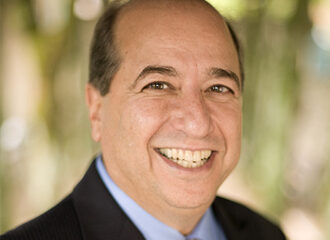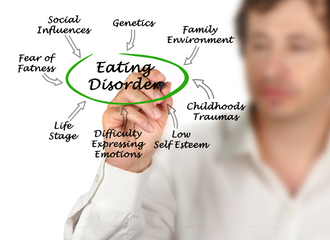Written by: Jessica Berens MS, RD, LDN (she/her/hers)
Senior Regional Nutrition Manger, Registered Dietitian
Intuitive eating has become a common buzz phrase in the nutrition world, but what actually is it and why is it so closely associating with the eating disorder community? We break everything down.
“Intuitive Eating: A Revolutionary Program That Works” is a book first published in 1995 and written by Evelyn Tribole and Elyse Resch. Evelyn and Elyse are both registered dietitians who created a bridge between two health perspectives that still occur today: the health community and the anti-diet movement. The aim of intuitive eating is to “provide a new way of eating that is ultimately struggle-free and healthy for the mind and body”1. Through this the 10 principles of intuitive eating were created.
What is intuitive eating?
Intuitive eating is a complex and nuanced approach to healing one’s relationship with food and often gets over-simplified into “eating when you’re hungry and stopping when you’re full”. Although honoring hunger and feeling fullness are 2 of the 10 principles, there are many other aspects of intuitive eating that often get overlooked. Before one can honor their hunger and feel fullness through an intuitive eating approach, they must first recognize and acknowledge the damage of dieting and work to reject the rules of diet culture.
The 10 Principles of Intuitive Eating

- Reject the diet mentality – Let go of the dieting mindset and the idea that external rules or restrictions can solve your eating concerns long-term.
- Honor your hunger – Listen to your body’s hunger signals and respond to them appropriately. Avoid ignoring or suppressing your hunger, as it can lead to binge-eating behaviors later.
- Make peace with food – Allow yourself to eat all types of foods without guilt or judgment. Avoid categorizing foods as “good” or “bad” and instead focus on enjoying a balanced variety of foods.
- Challenge the food police – Silence the critical inner voice that judges your food choices. Recognize that your worth is not determined by what you eat or how much you weigh.
- Discover the satisfaction factor – Pay attention to the pleasure and satisfaction you get from eating. Savor your meals and find joy in the eating experience.
- Feel your fullness – Listen to your body’s cues and stop eating when you feel comfortably full. Avoid overeating or eating beyond the point of satiety.
- Cope with your emotions without using food – Find alternative ways to deal with emotions, stress, and boredom that don’t involve turning to food for comfort.
- Respect your body – Accept and appreciate your body for its unique shape and size. Practice self-compassion and body positivity. Aim for balance and flexibility in your eating.
- Exercise for the joy of it – Engage in physical activity that you enjoy and that makes you feel good, rather than exercising solely for the purpose of burning calories or changing your body shape.
- Honor your health with gentle nutrition – Make food choices that honor your health and well-being, but without strict rules or rigid guidelines.
How the diet industry exploits intuitive eating
Intuitive eating has gained popularity over the past 15-20 years, and unfortunately the multi-billion-dollar diet industry has co-opted the term for their financial gain. This diet-driven form of ‘intuitive eating’ focuses solely on the hunger-fullness principles of intuitive eating as a method to eat less, “control cravings,” and creates doubt around what truly feeling hungry means. If the journey of intuitive eating leads to restrictive behaviors, increased stress around food, body hatred, and patterns of over and under feeding, then the concepts of intuitive eating have been manipulated to be yet another marketable, trending diet.
Intuitive eating & eating disorders
Diet culture is one of many factors that influence eating disorders yet has become a normalized part of society. In the eating disorder treatment and recovery process, many individuals aspire to become intuitive eaters. Tackling and dismantling the diet and weight-centric societal norms and unpacking internalized weight stigma are just a part of what makes intuitive eating difficult. Despite many folks striving to eat intuitively, there are a few barriers that occur in this process.
Challenges to eating intuitively in or after treatment
Many eating disorder symptoms drive a disconnect and mistrust with one’s interoceptive awareness and create an all-or-nothing approach to food. This disconnect can result in a lack of hunger/fullness cues, chaotic meals patterns, and overall confusion related to one’s physical sensations. The rigidity in food thoughts can drive judgments about food and the body that lead to uncertainty around what, how much, and when to eat. Eating disorder treatment aims to heal this interoceptive disconnect and bring awareness to external driving forces that many use to make decisions about food. The first four intuitive eating principles: reject the diet mentality, honor your hunger, make peace with food, and challenge the food police are pivotal steps towards intuitive eating and eating disorder recovery as a whole.
3 Ways to implement intuitive eating
Learning how to eat intuitively can be complex in the treatment process and often requires the support of an interdisciplinary team. Below are three foundational steps to begin the process of integrating intuitive eating into everyday life that can be applied during any phase of recovery.
#1: Recognize both internal and external influences that drive food choices
When deciding what, when, and how much to eat there are both external and internal factors that help us make these decisions. External factors that impact our decisions with food include what is available, what is affordable, and what we’re able to eat in the moment. External influence may also be driven by diet rules. When on a diet, we might ask ourselves, “Can I eat this on this plan?”, “Is that one of my off-limits or approved foods?”, or “Can I eat outside of my ‘eating window’?”. Many times, these questions and external dieting influences cloud our ability to connect to internal factors that drive food choices.
Internal factors include hunger level, enjoyment of food, preferences, cravings, or an emotional state that may increase the desire to eat. If high emotions are present, that doesn’t automatically eliminate the potential for physical hunger to be present. It is important to meet both needs in these moments by honoring the physical hunger with food and attending to the need of the emotion(s). By improving our awareness of what internal and external factors impact of food choices, we can identify which of these influences we may need to change in the recovery process.
#2: Remove labels from foods
One way to start changing the all-or-nothing thinking related to food is to remember that all foods have a benefit for the body. By focusing on what the food provides we can start to view all food neutrally. For example, a side salad provides our body with fiber and an array of vitamins and mineral, while the dressing on the salad contains dietary fat that helps us absorb some of the nutrients in the salad greens. A side of fries provides our body with key nutrients too. Fries provide carbohydrates, an energy source for the body, and contain B vitamins, vitamin C, and potassium. Both provide functional nutrients for the body and promote variety in our food choices.
We cannot forget about pleasure and satiety with food! The fifth principle of intuitive eating is about discovering the satisfaction factor. By removing the labels, we place onto foods such as “good, bad, healthy, unhealthy, should eat, or shouldn’t eat”, we can discover our unique preferences of flavors and food combinations.
#3: Begin the process of body respect
Intuitive eating principle eight focuses on respecting your body. The process of body respect is a long journey for many as it involves exploring core beliefs, trauma, and lived body discrimination based on size, race, and/or ableism. The first step towards respecting your body is to learn the basics of body respect. These basics are “my body deserves to be nourished, treated with dignity, touched affectionately with my consent and with respect, moved comfortably to the extent possible, and dressed comfortably in a style I like”1. Shifting the focus onto respect includes asking the question “even if I don’t love my body, can I respect and take care of it today?” and if so, what do I need to do to take care of it?
Conclusion
When we expand the definition of what it means to “eat intuitively” beyond a sole focus on hunger-fullness cues, we recognize the complexity of healing from disordered eating and becoming intuitive eaters. Although intuitive eating is commonly discussed in treatment, intuitive eating is not the gold standard of recovery in the treatment process. Treatment and nutrition goals vary by individual and are influenced by a variety of factors in one’s individual life experience. To eat intuitively in recovery means to reject eating disorder and dieting thoughts and behaviors and increase connection with our internal body wisdom. If this feels impossible or difficult to imagine, it does for many in the recovery process. Learning about each of the intuitive eating principles as they are written by Evelyn and Elyse can be helpful in anyone’s treatment journey. Intuitive eating is a great goal for recovery and one that benefits many folks, but we cannot forget the overall goal for treatment: to heal one’s relationship with food, in whatever that means and however that looks for each individual person.
Resources
- Tribole E, Resch E. Intuitive Eating. 4th ed. St. Martin’s Essentials.



